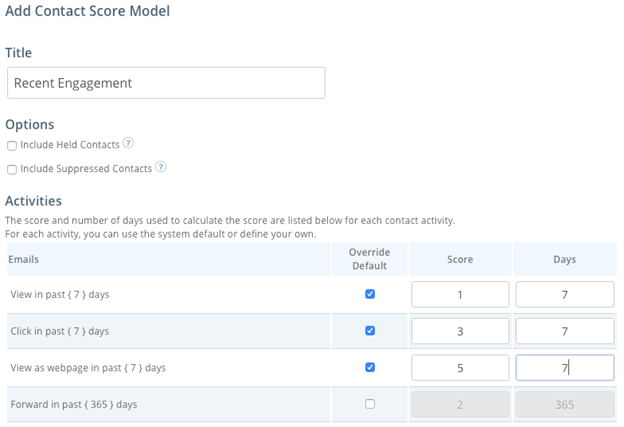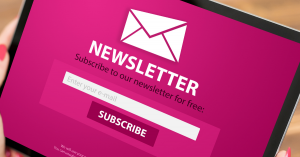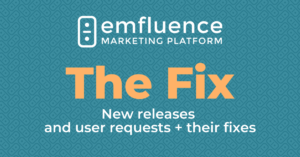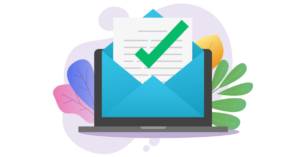As wacky as some of our marketing ideas get, there is always a rhyme or reason behind our actions. As marketers, we aren’t just chasing down anyone who stops by our storefront, whether virtually or physically. We understand that the most effective way to grow a business is to use a lead scoring model.
A properly fleshed out lead scoring model is one of the most impactful strategies to put in place to keep track of where your potential clients and customers are in the sales funnel. This is a crucial piece of information that clues you in on how ready (or not ready) they are to convert.
As you know, marketing is all about reaching the right customers with the right message at the right time. A well-designed lead scoring model can help you decide who to prioritize and who needs a little more time.
What is Lead Scoring?
Lead scoring may involve a lot of planning, organizing, and building but the straightforward way of breaking it down is assigning value to visitor actions to gauge their interest.
There are multiple challenges that marketers face, one of which is generating leads. Including a lead scoring system in your process helps you sort through a prospect’s actions and decide who is most likely to buy, sign up for a service, etc. From there, you’re able to maximize and dedicate your efforts to nurturing high value leads to increase your ROI.
Here’s how it works. A potential customer takes an action that puts them in your sales funnel. This could look like clicking on an ad, visiting your website, or anything else that gets you on their radar.
Once they give you their email address, a contact record is created that helps you keep track of all interactions moving forward. It assigns predetermined points to each action that’s taken. For example, signing up for email newsletters could be significant for you so you place more value and assign more points to that action. Eventually, your lead will reach a point value that signals to your sales team that they’re ready to make a purchase, set up a demo, or reach out to your team.
Along the way, you’ll have a good idea of how interested your lead is. If they’re consistently opening your emails, checking out your site, or starting a checkout process, you’ll know they’re close to converting and can set up specific triggers to help nudge them along depending on where they are in the funnel.
Lead Scoring Models
There are many different types of lead scoring models that can be created based on the type of data that you collect. You could organize your leads by fit versus interest, choosing to go after leads that are your ideal buyer or choosing to go after leads that are very engaged.
Models are usually tailored to whatever industry you’re in. However, when it comes to selecting which to go with, it really depends on your business’ interests. It’s not one-size-fits-all and what works well for one may not be the best for another.
Scoring System

Setting up your scoring system takes some forethought but don’t let it stress you out too much. Remember, you can always adjust as you go and as you get a better idea of your leads’ patterns.
The first thing to tackle to help you get started is to ask yourself the important questions. The goal is to figure out what kinds of scenarios would cause you to pursue a lead. Does there need to be a lot of interest for you to take the initiative or do you need them to personally reach out to you? Is subscribing to an email list enough or are you looking for repeated website visits?
Here’s a list of actions to keep into consideration:
- Downloading whitepapers
- Subscribing to emails
- Clicking on links in emails
- Filling out a form
- Visiting website pages
- Contacting your sales team
Email engagement, social media engagement, website behavior, and demographics are all things that can be considered.
Once you’ve made a list of activities, you can begin assigning a score to each. Something that is a strong indicator that a lead should be pursued is given a higher score while something less significant is given a lower score. You’ll need to establish a threshold as well which is the point when the lead is “sales ready”.
Lead Scoring Best Practices
Include both your sales and marketing team in your efforts. These are key teams within your company that will spend extensive time generating leads, nurturing leads, and getting them to convert. Their interactions will be the best insight into customer and client behavior. This will help you develop more accurate models.
Don’t forget to include demographic and firmographic data in your scoring factors. Assigning values to this can help you draw out those that usually fit your buyer persona. Many people that come across your content may not fit your buyer criteria and scoring based on:
- Location
- Budget
- Demographics
- Role
- Industry
Subtracting points is just as helpful. Negative scoring is just as useful insight for you and your team as positive scoring. You don’t want to spend time going after leads that appear ready just because they’ve reached a point threshold. Instead, implement negative scoring to help you differentiate quality leads from “quality leads”.
For example, a lead may be super active over the span of a few days. They sign up for everything, click on all your blog posts, and drop a few items in their cart. After the first week or so, they may ghost you and become unresponsive to communications. In this case, you may assign negative scores to deprioritize this lead for now. Other situations where negative scoring comes in handy include when your lead is from a competitor company, when leads disengage or unsubscribe, or when they are interested in researching your company for career purposes.
The Takeaway
Lead scoring models are extremely useful if you take the time to set one up properly. This is an investment that will save you and your teams time and effort further down the line. There’s nothing worse than pursuing a lead only to realize there was no potential for interest. Having a solid system set up helps streamline your process and makes it easier for you reach your goals.
Need help getting your lead scoring program kicked off? Reach out to us at expert@emfluemce.com – we’d love to help!


